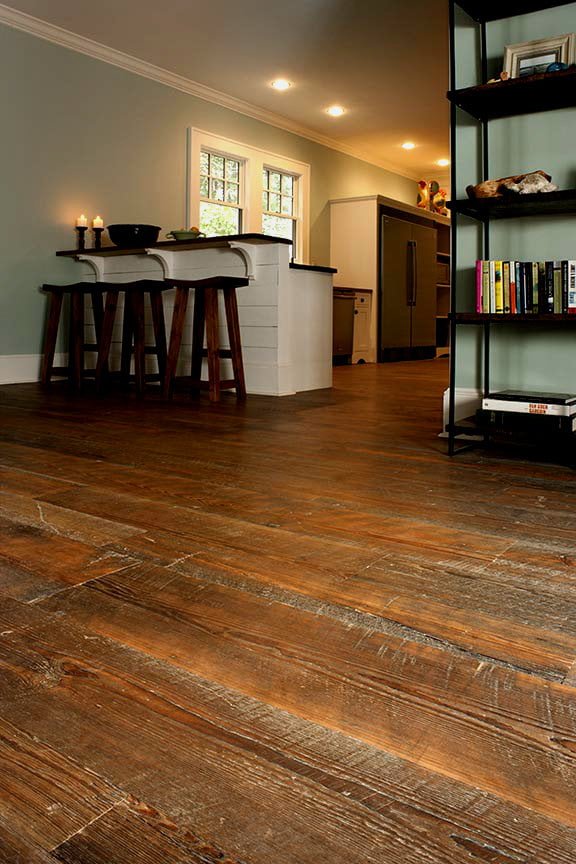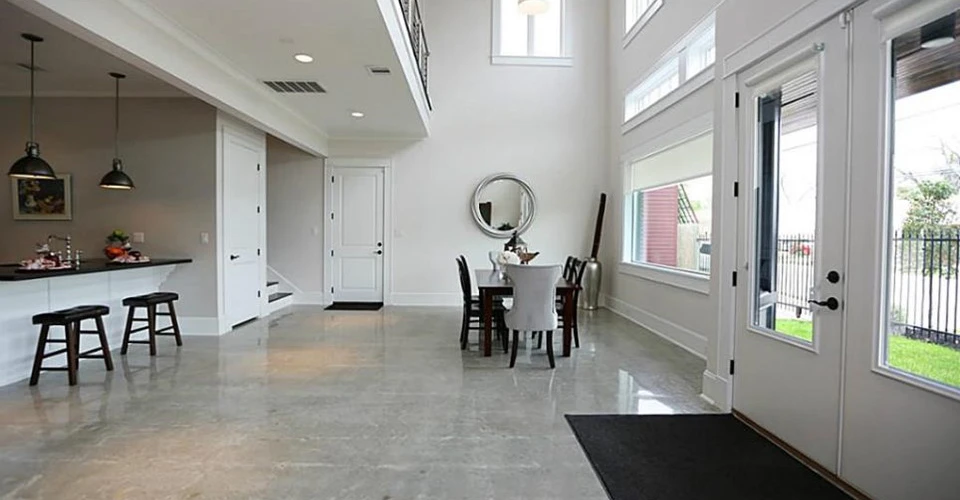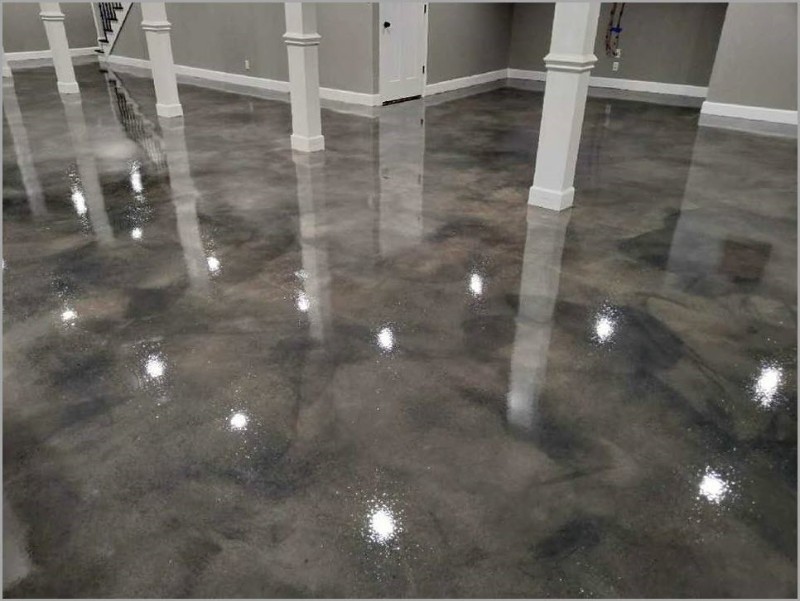Long-Lasting Commercial Stained Concrete Floors for Shop and Workplace Spaces
Long-Lasting Commercial Stained Concrete Floors for Shop and Workplace Spaces
Blog Article
Why Local Discolored Floor Covering Is the Perfect Option for Sustainable Home Renovation
In the realm of sustainable home enhancement, local tarnished flooring has actually emerged as a popular option amongst ecologically conscious home owners. As a cost-effective financial investment with minimized maintenance demands, it increases a thought-provoking inquiry: could this be the suitable solution for sustainable real estate?
Recognizing the Principle of Regional Tainted Floor Covering
While the concept could seem unique to some, local tarnished floor covering is an ingenious approach to home enhancement that combines looks, longevity, and sustainability. The term describes making use of locally sourced timber that is stained to attain a distinctive aesthetic allure. The staining process not only enhances the all-natural elegance of the timber grain but also includes a layer of security, enhancing the durability of the flooring. This method is considered sustainable as it reduces the demand for transportation of basic materials from distant areas, thus decreasing carbon footprints. Using neighborhood wood species usually supports neighborhood economic climates and advertises accountable woodland management techniques. This concept, consequently, provides homeowners an ecologically responsible choice without jeopardizing visual appeal or resilience.
The Appearance of Local Discolored Flooring
Why is local tarnished floor covering gaining appeal for its visual appeals? Regional discolored floor covering offers a diverse range of patterns and colors, mirroring the natural appeal and variations of the local wood varieties made use of. Eventually, the attraction of local tarnished flooring exists in its capacity to change homes into unique, aesthetically appealing areas while promoting sustainability.
Environmental Effects of Neighborhood Stained Floor Covering
The ecological ramifications of regional discolored flooring incorporate 2 considerable aspects: reducing carbon impact and waste minimization benefits. Making use of locally sourced products for staining not just decreases transport emissions, yet likewise advertises lasting forestry practices. Moreover, the waste minimization element enters into play as these floor covering kinds usually have a longer life expectancy, reducing the regular need for replacements and the waste related to it.
Reducing Carbon Impact
As home owners transform to more lasting alternatives, regional stained flooring emerges as a feasible remedy to decrease carbon footprint. The process of discoloring the floor covering, instead than using synthetic coverings, includes less chemicals and less energy-intensive procedures. Choosing for regional stained flooring shows an effective step in advertising environmental sustainability, highlighting a concrete method property owners can add to combating climate change from the comfort of their own homes. Stained Concrete.
Waste Reduction Benefits
Although often overlooked, waste reduction is one more considerable benefit of neighborhood tarnished floor covering. In addition, the discoloration procedure uses less resources and generates much less waste contrasted to making brand-new floor covering products. The choice of neighborhood tarnished flooring not just enhances homes however also underpins a dedication to sustainable important site living and waste decrease.
The Sturdiness and Maintenance of Regional Tainted Floor Covering

The Cost-Effectiveness of Regional Tainted Flooring
While regional stained floor covering might originally appear much more pricey than other alternatives such as carpeting or laminate, its long life and sturdiness rapidly transform it into a cost-effective selection. For property owners seeking a lasting, economical option for their flooring needs, regional tarnished flooring arises as a check my site premium, long-term financial investment that pays off over time.

The Real World Instances of Sustainable Residences With Regional Stained Floor Covering
In the world of sustainable home renovation, regional tarnished floor covering has become a preferred alternative. To even more illustrate its advantages, numerous real life examples of eco-friendly homes that have actually successfully integrated this flooring technique will be highlighted. These study offer concrete evidence of the benefits and effect of utilizing regional discolored flooring in sustainable homes.

Showcase: Eco-Friendly Flooring Houses
Checking the globe, one can discover many homes that embody the concept of green living via the use of regional tarnished floor covering. In the heart of Denmark, a minimalist home prides itself on its oak-stained floors, sourced and dealt with within the local region. Across oceans in copyright, a contemporary house showcases its rich, maple-stained flooring, a testament to the abundant neighborhood timber supply. Down under in Australia, a coastline residence beams with its eucalyptus-stained floorings, showing the country's native flora. These homes not only display the visual convenience of neighborhood tarnished floor covering however likewise its contribution to an extra lasting way of life. Each floor informs a tale of regard for the atmosphere, proving that design and sustainability can without a doubt coexist.
Neighborhood Stained Flooring Benefits
The indisputable attraction of local stained flooring prolongs past its aesthetic allure, as it additionally offers substantial benefits to both home owners and the environment. This type of flooring is sourced and produced locally, reducing transportation emissions and reinforcing the regional economic climate. The discoloration procedure utilizes all-natural, safe products, advertising indoor air quality and reducing the home's ecological impact. In a sustainable home in Portland, Oregon, as an example, neighborhood tarnished concrete floorings not only enhance the looks however also act as thermal mass, absorbing warmth throughout the day and releasing it in the evening, decreasing power use. Another instance is a green-certified home in Austin, Texas, where locally sourced walnut was stained and made use of for floor covering, adding to the home's LEED qualification.
Verdict
In final thought, neighborhood tarnished floor covering is my review here a sustainable and practical choice for home enhancement. With its distinct blend of environmental, economical and visual benefits, local stained floor covering is a clear option for property owners seeking a sustainable, economical and aesthetically enticing home renovation service.
In the world of sustainable home renovation, local tarnished floor covering has arised as a popular selection amongst ecologically aware property owners. Neighborhood discolored floor covering offers a diverse range of colors and patterns, mirroring the natural appeal and variants of the regional timber species utilized. The selection of neighborhood stained flooring not only enhances homes yet likewise underpins a dedication to lasting living and waste decrease.
For homeowners seeking a sustainable, cost-effective remedy for their floor covering requires, local discolored flooring emerges as a premium, lasting investment that pays off over time. Residential Stained Concrete Floors.
With its special blend of environmental, cost-effective and aesthetic benefits, neighborhood discolored floor covering is a clear option for property owners seeking a lasting, aesthetically appealing and cost-efficient home enhancement solution.
Report this page